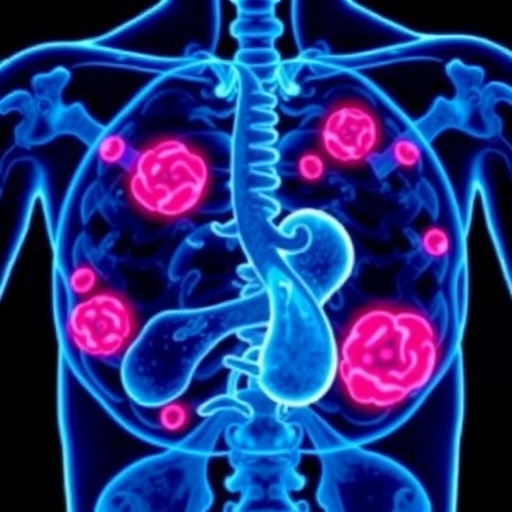In a significant stride for precision oncology, recent research has unveiled promising results for the use of belzutifan in managing Von Hippel-Lindau (VHL) disease-associated tumors. VHL disease is a hereditary condition marked by the development of multiple benign and malignant tumors across various organ systems, posing complex therapeutic challenges due to its multifocal and heterogeneous tumor landscape. Conventional management predominantly relies on surgical resection or ablation, often at the cost of accumulating organ dysfunction, highlighting an urgent need for systemic therapies offering effective tumor control with a safer profile.
Belzutifan emerges as an innovative oral therapeutic targeting hypoxia-inducible factor-2 alpha (HIF-2α), a pivotal transcription factor implicated in the pathogenesis of VHL-driven tumors through its role in oxygen-sensing and angiogenesis regulation. By inhibiting HIF-2α, belzutifan disrupts the adaptive mechanisms facilitating tumor growth and survival under hypoxic conditions, representing a targeted strategy that directly counters the molecular drivers of VHL-associated neoplasms.
A recently published retrospective single-center analysis from a specialized VHL center in Germany sheds light on the off-label application of belzutifan in a real-world setting, encompassing eight patients harboring genetically or clinically confirmed VHL disease. The study’s premise was to evaluate belzutifan’s therapeutic efficacy and safety profile beyond the controlled confines of clinical trials, particularly in advanced cases where traditional surgical interventions were limited or contraindicated due to potential morbidity.
The patient cohort underwent treatment with belzutifan for a median duration of 16.4 months, spanning from just over three months to beyond two years. Remarkably, all patients achieved disease stabilization, an encouraging outcome given the aggressive and multifocal nature of VHL tumors. Furthermore, partial tumor regression was documented in three individuals, signaling not only disease arrest but actual tumor shrinkage in a subset of cases, underscoring belzutifan’s potential as an active tumor-modifying agent.
Importantly, while two patients experienced progression manifested by new lesion development, no advancement was observed in the primary tumors that initially warranted therapeutic intervention. This finding suggests belzutifan’s capacity to exert durable control over established tumor masses, potentially delaying or circumventing the need for invasive surgical procedures—an especially valuable benefit considering the cumulative morbidity associated with repeated surgeries in VHL.
From a mechanistic viewpoint, belzutifan’s efficacy aligns with its mode of action as a HIF-2α inhibitor; by abolishing pathologic hypoxia signaling, it impairs tumor angiogenesis and metabolism, crucial hallmarks for tumor maintenance and expansion in VHL. Tumor control across multiple organ systems highlights its systemic pharmacologic activity and supports its potential utility as a cornerstone agent in VHL therapeutics.
Safety remains a critical consideration in any long-term systemic therapy. Anemia was the most ubiquitous adverse event, affecting every patient in the cohort. This toxicity likely stems from HIF-2α’s physiological role in erythropoiesis regulation, necessitating vigilant hematologic monitoring during treatment. Notably, some patients required erythropoiesis-stimulating agents or dose modifications to manage anemia, reflecting the need for personalized management strategies in clinical practice.
Mild leukocytopenia and transient elevations in liver enzymes were also observed but generally did not compel treatment interruption or alteration, signifying a tolerable side effect profile. Infections occurred sporadically yet were effectively managed with brief treatment pauses, further indicating belzutifan’s suitability for chronic administration with manageable safety concerns when accompanied by proactive monitoring.
The implications of this study are substantial for the VHL patient population, who endure the dual burden of a lifelong cancer predisposition syndrome and the cumulative risks from multiple surgeries and interventions. Belzutifan offers a promising non-invasive alternative, potentially transforming the therapeutic landscape by delivering effective tumor suppression while preserving organ function and quality of life.
Nevertheless, the study’s retrospective and single-center design denotes intrinsic limitations, including a small sample size and selection bias, which necessitate caution in generalizing findings. Prospective, large-scale, multicenter trials with extended follow-up are imperative to definitively establish belzutifan’s long-term efficacy and safety, along with optimal dosing schemas and management protocols.
In the broader context of targeted oncology, belzutifan exemplifies a paradigm shift toward precision medicine approaches aimed at intercepting cancer at its molecular roots rather than merely addressing downstream consequences. Its application in VHL disease could serve as a blueprint for managing other hereditary cancer syndromes characterized by dysregulated hypoxia pathways.
Moreover, the study underscores the value of integrating molecularly targeted therapies into multidisciplinary care frameworks for hereditary tumor syndromes, complementing surgical and other modalities. Such integration not only holds promise for enhancing patient outcomes but also for reducing the physical and psychological burden associated with repeated invasive procedures.
As research progresses, understanding resistance mechanisms to HIF-2α inhibitors like belzutifan will be crucial to sustaining and augmenting therapeutic responses. Investigations into combinatorial regimens or sequencing with other systemic agents are warranted to address potential escape pathways and tumor heterogeneity.
In summary, belzutifan represents a breakthrough oral agent with demonstrable efficacy in tumor control across heterogeneous VHL-associated neoplasms, offering a well-tolerated alternative to surgical interventions. This newly gathered clinical experience affirms its role in the evolving treatment armamentarium for VHL disease, setting the stage for improved patient-centered care strategies grounded in molecular insights.
Future studies hold the key to refining patient selection, optimizing treatment duration, and mitigating adverse effects, thereby maximizing the therapeutic potential of belzutifan while safeguarding patient quality of life. The oncology community eagerly anticipates these developments, poised to redefine standards of care for this challenging hereditary tumor syndrome.
Subject of Research: Belzutifan treatment efficacy and safety in patients with Von Hippel-Lindau (VHL) disease-associated tumors
Article Title: Belzutifan for patients with Von Hippel-Lindau (VHL) disease-associated heterogeneous tumors – a retrospective single center analysis
Article References: Rhein, K., Kotsis, F., Ganner, A. et al. Belzutifan for patients with Von Hippel-Lindau (VHL) disease-associated heterogeneous tumors – a retrospective single center analysis. BMC Cancer 25, 1686 (2025). https://doi.org/10.1186/s12885-025-15192-8
Image Credits: Scienmag.com
DOI: https://doi.org/10.1186/s12885-025-15192-8




